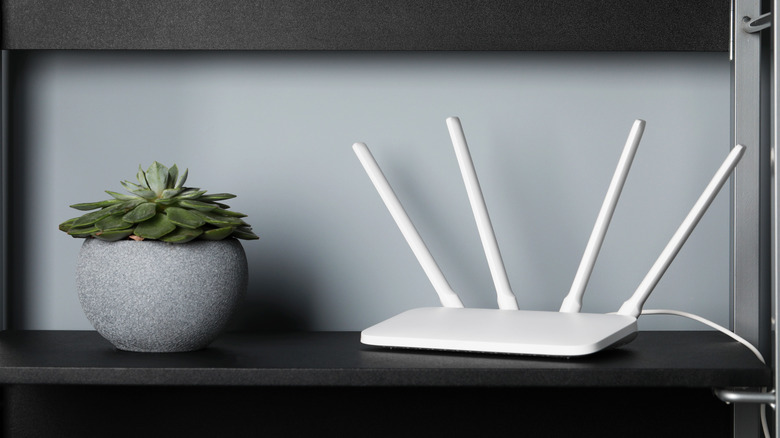Router Vs. Access Point: How Are They Different?
When researching how to set up a Wi-Fi network, you're going to hear a lot of talk about routers and access points. While both help you connect to the internet, their roles in a network are fundamentally different. Understanding these differences can help make setting up and managing a network much simpler. But first, you'll need to know how routers and access points work (and, in turn, how they work together).
Broadly speaking, routers are best for establishing and maintaining your network, while access points are better suited for extending your network's range to reach beyond what the router and modem can do. In other words: Routers are an essential part of your Wi-Fi network, while access points are merely a helpful add-on. No matter if you use access points or not, your Wi-Fi setup is going to need a router. It's a non-negotiable. Another way to put it: A router can act as an access point, while an access point can never act as a router.
The difference between routers and access points
Routers are at the heart of most home networks. Its job is twofold: One, to create a local network that links all your devices together, and two, provide access to the internet through a connection with a modem. It helps to imagine a router as the traffic controller of your network: It directs incoming and outgoing internet data and sends it to the correct devices.
Most wireless routers today are a combination of multiple features in one box: a router, a wireless access point, a basic firewall, and a small Ethernet switch. You plug your modem into the router, and then the router distributes the internet to your devices via Wi-Fi or Ethernet cables. This also helps secure your network with password protection and basic firewall features to keep unwanted traffic out.
A router doesn't just connect devices to the internet, though. It also lets them talk to each other. (For example, if you want to print something from your phone or stream a video from your laptop to the TV, the router helps make that happen.)
Unlike routers, access points (APs) are not capable of managing a network or communicating with the internet. Instead, an access point is used to extend the wireless coverage of an existing network. It does this by connecting to the router (or a switch) via an Ethernet cable and broadcasting a Wi-Fi signal from that location.
When to use (or not to use) access points
Access points are most commonly used in larger spaces (like offices, schools, or large homes) where a single wireless router might not be able to provide strong enough coverage by itself. They'd be pretty redundant in smaller homes or apartments. And because access points lack routing capabilities like assigning IP addresses or managing traffic between networks, you'll always need a router — no matter what the size of your space is.
One last thing: We'd be remiss not to mention mesh networking and explain how its nodes differ from basic APs. Unlike traditional setups where a single router broadcasts the signal and access points extend it, mesh systems use multiple identical devices that act as both a router and an access point to communicate with one another and distribute Wi-Fi more evenly. These mesh nodes are able to route traffic between each other and the main modem connection, automatically adjusting themselves to maintain the strongest possible signal as users move throughout the area. They're sort of like router-access point hybrids. That said, standard APs aren't capable of doing all this. Unless you have a mesh setup, the router does its job and APs do theirs.


